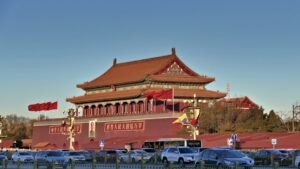In addition to having one of the largest populations in the world, China also boasts a middle class that is expanding quickly and has rising purchasing power. Access to this enormous and profitable market necessitates comprehending the distinct technological, cultural, and legal environments. This article will explain some basic Chinese marketing terminology and highlight the critical components of marketing in China.
Table of Contents
ToggleUnderstand the Chinese Consumer
Chinese customers are renowned for their attention to values and brand awareness. They have historically favored brands with a solid track record and reputation. Younger consumers drive a trend toward novelty and individuality, but credibility and trust are still crucial.
- Research and Segment: Tailor your offerings and messages to specific target demographics.
- Localize Content: Avoid direct translations. Instead, adapt your content so it’s culturally and contextually relevant.
Embrace Chinese Social Media Platforms
While platforms like Facebook, Twitter, and Instagram dominate globally, they don’t hold sway in China. Instead, marketers need to be proficient with platforms like:
- WeChat (微信, Wēixìn): More than a messaging app, it’s a lifestyle platform for shopping, payments, news, and much more.
- Douyin (抖音, Dǒuyīn): Known as TikTok outside of China, this short video platform is massively popular among the younger demographic.
- Sina Weibo (新浪微博, Xīnlàng Wēibó): A microblogging site often compared to Twitter, but with more multimedia features.
Navigating Regulatory Hurdles
The Chinese government has strict regulations concerning media, content, and advertising:
- Get Licenses: Ensure you have the necessary permissions to operate and advertise.
- Stay Updated: Regulations change frequently. Keep up-to-date to avoid pitfalls.
Utilize Key Opinion Leaders (KOLs)
KOLs, or influencers, are significant in Chinese consumers’ purchase decisions. Collaborating with a KOL can boost brand awareness and drive sales.
Participate in Key Shopping Festivals
Events like the Singles’ Day (双十一, Shuāng shíyī) offer tremendous opportunities. Brands often prepare months in advance for these shopping bonanzas.
Chinese Marketing Vocabulary
To navigate the Chinese marketing scene, familiarize yourself with these key terms:
市场 (Shìchǎng): Market
广告 (Guǎnggào): Advertisement
品牌 (Pǐnpái): Brand
推广 (Tuīguǎng): Promotion
消费者 (Xiāofèi zhě): Consumer
竞争对手 (Jìngzhēng duìshǒu): Competitor
市场策略 (Shìchǎng cèlüè): Marketing Strategy
目标客户 (Mùbiāo kèhù): Target Customer
销售 (Xiāoshòu): Sales
数字营销 (Shùzì yíngxiāo): Digital Marketing
Conclusion
A combination of cultural sensitivity, adaptability, and local understanding is required for marketing in China. Speaking the language of China literally and figuratively and comprehending its intricacies is crucial for any business, domestic or foreign, hoping to succeed in this market.
Contact our head teacher, Chen Huimin, at info@lcchineseschool.com if you want to learn Chinese or have additional questions about our Chinese programs.
Sign up for a free trial class here.
Learn about our Internship Program in China.
Learn about holidays in China in 2023.
Get free Chinese learning resources.







